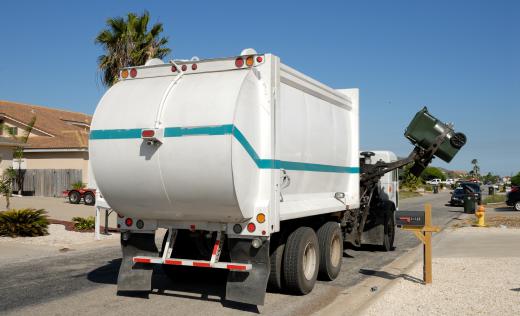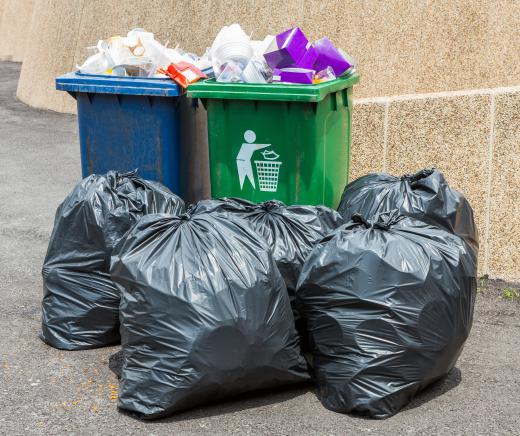A compactor bin is a large trash receptacle that features some sort of compacting mechanism to maximize storage space. The bin is usually made of steel, and while the can vary in size, most compactor bin models are quite large. Once trash is loaded inside, a hydraulic arm can be activated to compress the contents, thereby freeing up more storage space for additional trash. The motor for this device is usually electric; it may run off a battery or it may be plugged into an outlet.
In most cases, only certain materials will be loaded into a compactor bin, though some are rated for general refuse and various items can be loaded into them. Bins specifically purposed for recycling will usually only hold recyclable materials such as cardboard, paper, metals, and in some cases glass. These items can be loaded into the bin, and a hydraulic arm can be activated to press the trash toward one end of the bin. When the arm releases, the trash may decompress, but as more trash is added, the arm can be reactivated to free up more space. This can be done until the bin reaches its capacity and no more trash can be pushed in. Once this occurs, a door on the bin must be closed and latched shut to prevent items from falling out during transport.

Two general types of compactor bin models exist: front loading models and top loading models. Front loading models feature an opening on the front face of the bin, through which trash or other materials can be loaded. A top loading model features an opening as well, but that opening is positioned on the top of the bin. Certain jobs may call for one design or the other; smaller bins tend to feature front loading openings more often than exceptionally larger bins, though large bins can also have a front loading opening.

Additional options for a compactor bin are available to make trash removal and compaction much easier. Larger bins are usually truck-mounted, which means a truck can deliver the bin to a particular location, dump it in place, and return to pick it up once it is full. A winch system is used to haul the compactor bin onto the truck or lower it onto the ground, and steel caster wheels are mounted to the bottom of the bin to facilitate easier movement. Others may be designed for lifting by a garbage truck that features lifting tines. Such a design is usually reserved for smaller bins.
